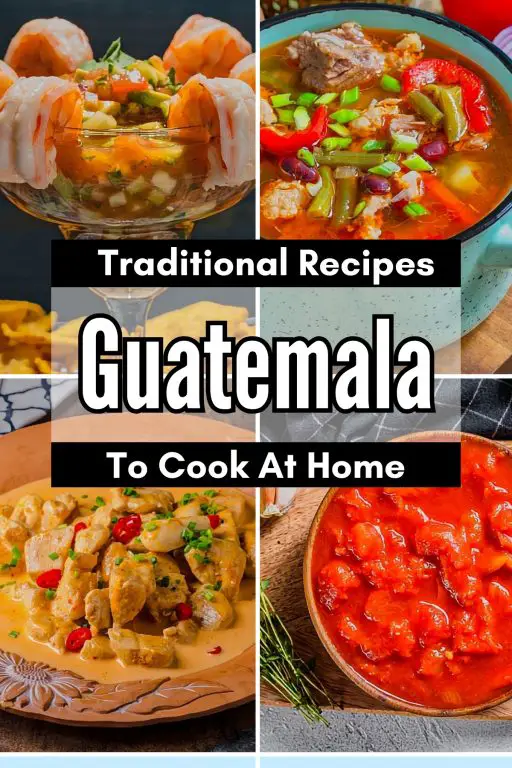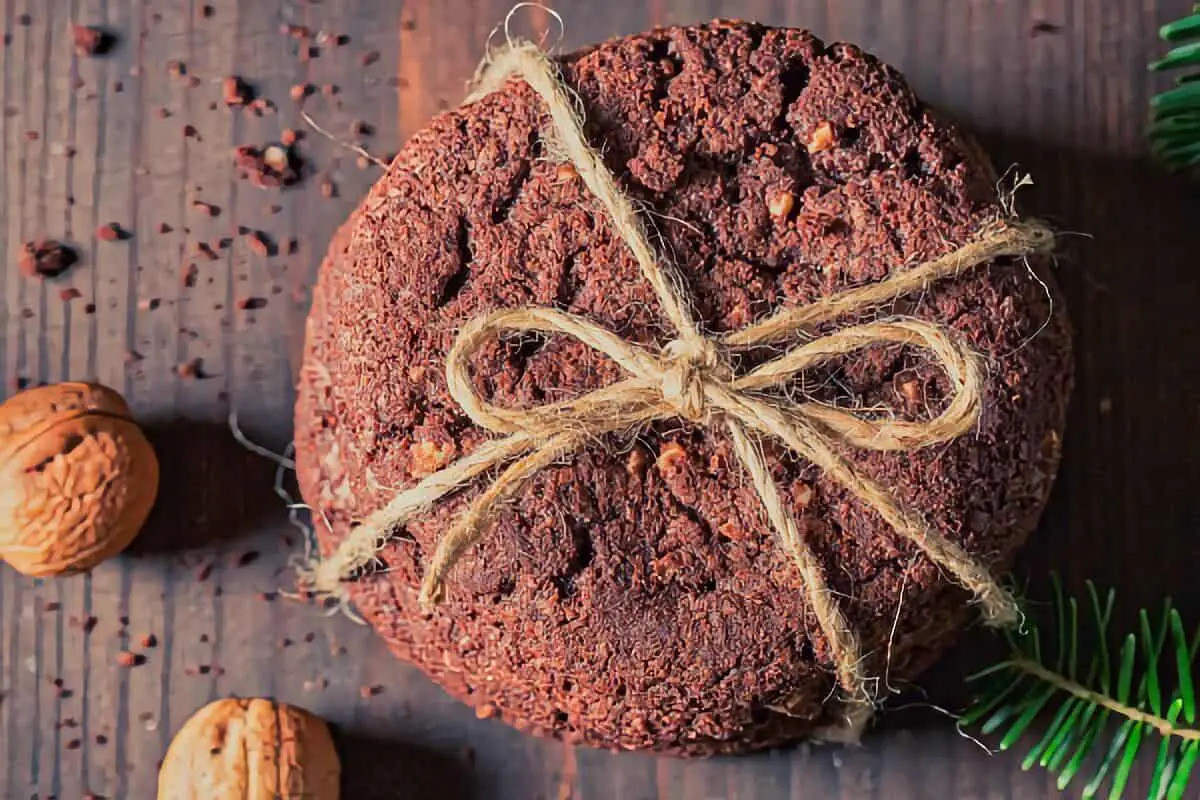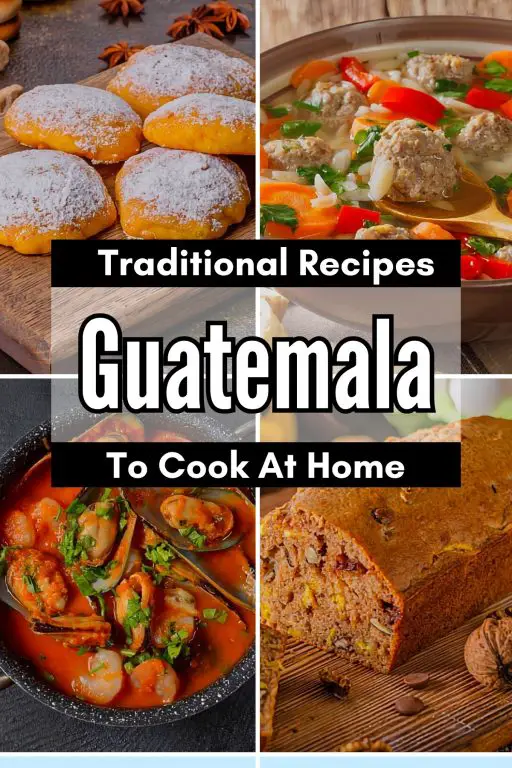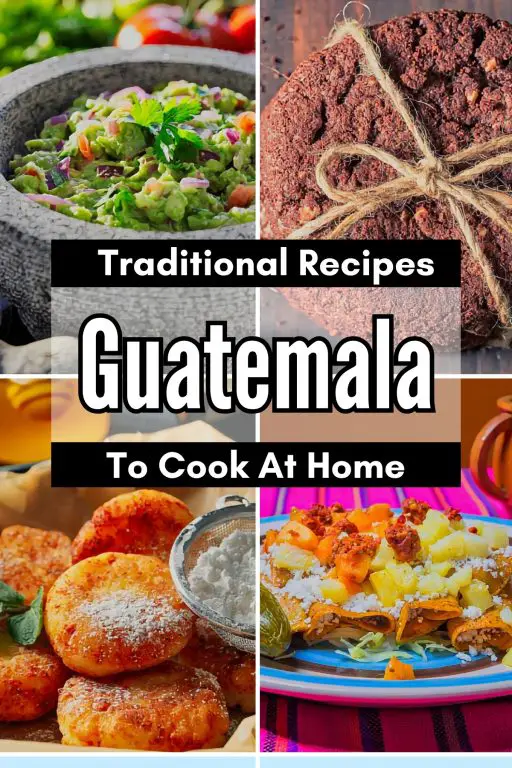My Guatemalan Champurradas recipe cooking class in Quetzaltenango, Guatemala was centered local recipes using local produce and other ingredients. Quetzaltenango is Guatemala’s second-largest city Xela and is renowned for its indigenous culture and highland scenery. The town is surrounded by volcanoes and offers parks, historical buildings and markets. Quetzaltenango is a good place to experience local customs and foods.
In the cooking class we made champurradas – traditional Guatemalan cookies you eat with hot chocolate or coffee. The instructor said champurradas are made with just flour, sugar, butter and baking powder, plus a few spices.
First impressions of the Champurradas recipe was simple and the aroma of the kitchen when we mixed the ingredients was appealing. The dough was easy to work with and cookie shaping was creative. The instructor let us make up different designs and I liked that you could change up the recipe by adding chocolate or coconut.
When it was time to taste the champurradas, the texture was crumbly but tender and sweet. The cookies were mildly buttery with cinnamon and vanilla notes. They went well with a pot of hot chocolate for a snack. The Champurradas recipe is versatile; They’re scrumptious anytime of the day as a breakfast treat or an afternoon snack.
Locals and vendors of Champurradas recipe in Quetzaltenango can be found in bakeries and street stalls. Many families make their own version of these cookies at home, even sharing secret family recipes across generations. The accessibility and simplicity make the champurradas a favorite for residents and visitors alike.
Following the cooking class I went to the local markets in Quetzaltenango and saw traditional foods and ingredients. Stalls selling fresh produce, spices and baked goods filled the markets. Watching locals shop for ingredients gave insight into how the region ate everyday.
Overall my cooking class experience in Quetzaltenango was educational and fun. I learned how to make a traditional dish while learning about champurradas in Guatemalan cuisine. The recipe Champurradas demonstrates how simple ingredients can be transformed into tasty treats enjoyed by the community. Whether at a local cafe or at home, champurradas are a staple Guatemalan food.
Ingredients For the Guatemalan Champurradas Recipe
All-purpose Flour
Granulated Sugar
Baking Powder
Salt
Ground Cinnamon
Softened Butter
Eggs
Milk
Vanilla Extract
Cooking Instructions For the Guatemalan Champurradas Recipe
Preheat your oven to 350°F (175°C and line a baking sheet with parchment paper. – Make sure the oven is fully preheated before starting the baking process. Use a baking sheet that fits comfortably in your oven and can accommodate all the Champurradas.
In a mixing bowl, whisk together the all-purpose flour, cornstarch, baking powder, and salt. Set aside. – Ensure that the dry ingredients are well combined and evenly distributed. Use a whisk or a fork to effectively incorporate the ingredients.
In a separate large bowl, cream together the softened butter and granulated sugar until light and fluffy. – Creaming the butter and sugar thoroughly will create a lighter texture in the Champurradas. Use an electric mixer or a sturdy whisk to cream the butter and sugar.
Add the eggs, one at a time, to the butter and sugar mixture, beating well after each addition. Stir in the vanilla extract. – Adding the eggs one at a time ensures proper incorporation into the dough. Beat the mixture well after each egg addition to maintain a smooth consistency. Stir in the vanilla extract gently until evenly combined.
Gradually add the dry ingredients to the wet mixture, mixing well after each addition. The dough should come together and be slightly sticky. – Add the dry ingredients in small batches to prevent clumps and ensure even mixing. Mix thoroughly after each addition to achieve a uniform dough. The dough might be slightly sticky, which is normal. Avoid overmixing.
If using sesame seeds, spread them out on a plate. Take about a tablespoon of dough and roll it into a ball using your hands. Roll the ball in the sesame seeds until coated. Place the coated ball onto the prepared baking sheet. Repeat this process with the remaining dough, spacing the balls about 2 inches apart.
Ensure the sesame seeds are spread evenly on the plate for easy rolling. Roll the dough gently to create a smooth ball shape. Coat the dough ball in sesame seeds by rolling it lightly over the plate. Place the coated dough balls on the prepared baking sheet, leaving sufficient space for spreading during baking.
Flatten each ball slightly with the palm of your hand or the bottom of a glass to create a thick disc shape. – Apply gentle pressure to flatten the dough balls without completely squishing them. Alternatively, use the bottom of a glass to flatten the balls uniformly.
Bake the Champurradas in the preheated oven for about 12-15 minutes, or until the edges are lightly golden. – Keep an eye on the Champurradas while baking to prevent over-browning. Adjust the baking time if needed based on your oven’s performance and desired level of browning.
Remove the baking sheet from the oven and allow the Champurradas to cool for a few minutes before transferring them to a wire rack to cool completely. – Letting the Champurradas cool slightly on the baking sheet makes them easier to handle. Use a spatula or a fork to transfer the cookies from the baking sheet to a wire rack. Cooling on a wire rack helps the Champurradas cool evenly and prevents them from becoming soggy.
Once cooled, store the Champurradas in an airtight container at room temperature. They can be enjoyed for several days. – Ensure the cookies are completely cooled before storing to prevent moisture buildup. Can airtight container to maintain the freshness and texture of
Most Popular Spices Used by Guatemalan Locals
Guatemalan cuisine is known for its balanced and flavorful use of spices, combining native ingredients with those introduced by Spanish settlers to create a rich tapestry of taste. One of the most prominent spices in Guatemalan cooking is Qchiote (annatto), which adds a mild peppery flavor and vibrant red hue to various dishes. Often ground into a paste, achiote is used in stews, tamales, and rice, infusing the food with an earthy flavor that complements other ingredients. Its coloring properties also enhance the visual appeal of traditional recipes, making it a versatile favorite among locals.
Another essential spice is Pepitoria, or ground pumpkin seeds. Unique to Guatemalan and neighboring Central American cuisines, pepitoria is often used to thicken sauces and add depth to stews, especially in dishes like pepian, where it contributes a subtle nutty flavor. Combined with roasted tomatoes, chilies, and other spices, pepitoria adds a distinctive richness that embodies the essence of Guatemalan cooking. This practice of using seeds as a seasoning reflects ancient Mayan cooking traditions, which continue to influence modern Guatemalan flavors.
Cinnamon is also widely used, particularly in sweet and savory dishes that highlight Guatemalan cuisine’s Spanish influence. Known locally as canela, cinnamon is a common ingredient in mole sauces, as well as in desserts and beverages like atol de elote (a corn-based drink). Its warm, aromatic flavor adds complexity to various recipes, bridging the flavors of local ingredients with a Spanish touch. Often paired with other spices, cinnamon is essential in creating the nuanced flavors found in Guatemalan comfort foods.
Allspice is another popular spice in Guatemala, bringing a warm, slightly peppery note to savory dishes and marinades. This spice, derived from the dried berries of the pimento tree, is known as *pimienta gorda* in Guatemala and is commonly used in soups, stews, and meats. Its subtle complexity enhances dishes without overpowering them, offering a rounded flavor profile that highlights the country’s love for balanced seasoning.
Chili Peppers such as cobán and guajillo varieties are staples for adding heat and depth. Though Guatemalan cuisine is not typically very spicy, the addition of these chilies gives dishes a gentle warmth and smokiness. Ground or used whole, these chilies appear in everything from salsas to stews, like the renowned kak’ik, a spicy turkey soup from the highlands. Together, these spices — achiote, pepitoria, cinnamon, allspice, and chili peppers — define the flavors of Guatemalan food, infusing it with tradition and the unique balance of local and global influences.
Eating Healthy in Guatemala
Paragraph From
Eating healthy in Guatemala is achievable, thanks to the country’s abundant fresh produce, local markets, and traditional cooking methods that prioritize natural ingredients. Guatemala’s varied landscape, which includes fertile highlands and tropical lowlands, allows for a diverse range of fruits, vegetables, and grains. Staples like black beans, corn, and rice form the base of many dishes and offer a nutritious source of protein, fiber, and essential vitamins. Black beans, in particular, are a common ingredient in Guatemalan meals, providing protein and fiber without saturated fats, making them a great choice for a balanced diet. Paired with corn tortillas — a daily staple rich in fiber and antioxidants — these ingredients are satisfying and help maintain energy levels throughout the day.
One of the most beneficial aspects of Guatemalan cuisine is its emphasis on fresh vegetables and fruits. Local markets, or mercados, are filled with seasonal produce such as tomatoes, avocados, carrots, and leafy greens. Vegetables are often incorporated into traditional dishes like caldo de res, a hearty beef soup loaded with nutrient-dense vegetables, or jocon, a chicken stew made with tomatillos and cilantro. The vibrant colors in these dishes reflect the high vitamin and antioxidant content that supports overall health, making it easy to get essential nutrients through regular meals.
In addition to vegetables, tropical fruits such as papaya, mango, and bananas are commonly available, offering essential vitamins like vitamin C and potassium. These fruits are often enjoyed fresh, juiced, or as a light snack, providing natural sugars and hydration in the country’s warmer regions. The emphasis on fresh, whole foods is also reflected in Guatemalan drinks, where fruit-based beverages and traditional teas are common, reducing the need for processed, sugar-laden options.
Guatemalan cooking methods also support a healthier diet. Many dishes are simmered, boiled, or lightly sautéed rather than fried, preserving the nutritional value of ingredients without adding unnecessary fats. Traditional stews, like pepian and hilachas, are slow-cooked with minimal oil, allowing spices, herbs, and vegetables to enhance the flavor naturally. This approach not only brings out the authentic flavors of the ingredients but also aligns with the principles of healthy eating by reducing added fats and sugars.
Overall, Guatemala’s local markets, traditional foods, and natural cooking techniques make it easy to eat healthily. Embracing these customs allows individuals to enjoy a balanced, nutrient-rich diet rooted in fresh, wholesome ingredients, supporting wellness and long-term health.
 FAQ For the Guatemalan Champurradas Recipe
FAQ For the Guatemalan Champurradas Recipe
Q: What are Guatemalan Champurradas and how are they made?
A: The Guatemalan Champurradas recipe features a traditional type of cookie often enjoyed with coffee or hot chocolate. These cookies are made using simple ingredients such as flour, sugar, baking powder, and butter, which combine to create a rich, slightly sweet dough. After mixing the ingredients, the dough is rolled out and cut into shapes before being baked until they turn golden brown. The texture is crisp on the outside and soft on the inside, making them a delightful treat for any occasion.
Q: What variations can be added to the Guatemalan Champurradas recipe?
A: There are several variations to the Guatemalan Champurradas recipe that can enhance their flavor and texture. Some recipes include the addition of spices such as cinnamon or nutmeg, which add warmth and depth to the cookies. Others may incorporate chocolate chips or nuts for an extra crunch and richness. You can also experiment with adding dried fruits like raisins or cranberries to introduce a burst of natural sweetness, making each batch unique and tailored to personal tastes.
Q: How are Guatemalan Champurradas typically served?
A: The Guatemalan Champurradas recipe is often served as a delightful accompaniment to beverages such as coffee, hot chocolate, or even atole, a warm corn-based drink. These cookies are ideal for breakfast, as a snack, or during social gatherings, where they can be enjoyed alongside friends and family. In Guatemala, it is common to pair these cookies with cheese, which complements the sweetness and adds a savory touch, creating a well-rounded flavor experience.
Q: Can the Guatemalan Champurradas recipe be made in advance?
A: Yes, the Guatemalan Champurradas recipe can be made in advance, making them a convenient option for gatherings or snacks throughout the week. Once the cookies are baked, allow them to cool completely before storing them in an airtight container to maintain their freshness. They can last for several days at room temperature, and you can also freeze them for longer storage. When ready to enjoy, simply thaw them or warm them briefly in the oven to restore their delicious texture.
Q: What is the origin of Guatemalan Champurradas?
A: The Guatemalan Champurradas recipe has its roots in traditional Guatemalan cuisine, where they are a popular snack enjoyed across the country. They reflect the influence of indigenous and Spanish culinary traditions, which blend to create unique flavors and textures. These cookies are often made during festive occasions and family gatherings, symbolizing hospitality and the joy of sharing food with loved ones. Over time, Champurradas have become a beloved part of Guatemalan culture, cherished for their simple yet delightful taste.

Guatemalan Champurradas Recipe
Equipment
- Mixing Bowl Used to combine dry ingredients with wet ingredients and create the dough for the Champurradas.
- Baking Sheet Used to place the formed dough balls for baking in the oven.
- Oven Used to bake the Champurradas until golden brown.
- Spatula Used to mix the ingredients together and shape the dough balls.
- Measuring Cups and Spoons Used to accurately measure the ingredients for the recipe.
- Greasing Spray or Butter Used to grease the baking sheet to prevent sticking.
- Cooling Rack Used to cool the baked Champurradas after removing them from the oven.
Ingredients
- 2 cups flour all-purpose
- 1 cup sugar granulated
- 1 teaspoon baking powder
- 1/2 teaspoon salt
- 1/2 teaspoon cinnamon ground
- 1/2 cup butter unsalted softened
- 2 eggs large
- 1/4 cup milk
- 1 teaspoon vanilla extract
Instructions
Preheat your oven to 350°F (175°C and line a baking sheet with parchment paper.
- a. make sure the oven is fully preheated before starting the baking process.
- b. use a baking sheet that fits comfortably in your oven and can accommodate all the champurradas.
In a mixing bowl, whisk together the all-purpose flour, cornstarch, baking powder, and salt. Set aside.
- a. ensure that the dry ingredients are well combined and evenly distributed.
- b. use a whisk or a fork to effectively incorporate the ingredients.
In a separate large bowl, cream together the softened butter and granulated sugar until light and fluffy.
- a. creaming the butter and sugar thoroughly will create a lighter texture in the champurradas.
- b. use an electric mixer or a sturdy whisk to cream the butter and sugar.
Add the eggs, one at a time, to the butter and sugar mixture, beating well after each addition. Stir in the vanilla extract.
- a. adding the eggs one at a time ensures proper incorporation into the dough.
- c. beat the mixture well after each egg addition to maintain a smooth consistency.
- d. stir in the vanilla extract gently until evenly combined.
Gradually add the dry ingredients to the wet mixture, mixing well after each addition. The dough should come together and be slightly sticky.
- a. add the dry ingredients in small batches to prevent clumps and ensure even mixing.
- a. mix thoroughly after each addition to achieve a uniform dough.
- b. the dough might be slightly sticky, which is normal. Avoid overmixing.
If using sesame seeds, spread them out on a plate. Take about a tablespoon of dough and roll it into a ball using your hands. Roll the ball in the sesame seeds until coated. Place the coated ball onto the prepared baking sheet. Repeat this process with the remaining dough, spacing the balls about 2 inches apart.
- a. ensure the sesame seeds are spread evenly on the plate for easy rolling.
- b. roll the dough gently to create a smooth ball shape.
- c. coat the dough ball in sesame seeds by rolling it lightly over the plate.
- d. place the coated dough balls on the prepared baking sheet, leaving sufficient space for spreading during baking.
Flatten each ball slightly with the palm of your hand or the bottom of a glass to create a thick disc shape.
- a. apply gentle pressure to flatten the dough balls without completely squishing them.
- b. alternatively, use the bottom of a glass to flatten the balls uniformly.
Bake the champurradas in the preheated oven for about 12-15 minutes, or until the edges are lightly golden.
- a. keep an eye on the champurradas while baking to prevent over-browning.
- c. adjust the baking time if needed based on your oven's performance and desired level of browning.
Remove the baking sheet from the oven and allow the champurradas to cool for a few minutes before transferring them to a wire rack to cool completely.
- a. letting the champurradas cool slightly on the baking sheet makes them easier to handle.
- b. use a spatula or a fork to transfer the cookies from the baking sheet to a wire rack.
- c. cooling on a wire rack helps the champurradas cool evenly and prevents them from becoming soggy.
Once cooled, store the champurradas in an airtight container at room temperature. They can be enjoyed for several days.
- a. ensure the cookies are completely cooled before storing to prevent moisture buildup.
- b. hoose an airtight container to maintain the freshness and texture of




5 comments
These cookies were crisp and went so well with morning coffee.
Im Davin Im making these cookies for school project on indengous people.
I personally think that adding a twist to the traditional Guatemalan Champurradas recipe by incorporating a hint of cardamom or nutmeg could take the flavor to a whole new level. Whos up for trying it out?
I cant believe they left out the secret ingredient for Guatemalan Champurradas! Its like theyre holding out on us. Whos with me in demanding the full recipe?
I cant believe they left out the secret ingredient for Guatemalan Champurradas! What about the magic touch of love and tradition that truly makes them special? Disappointed in the oversight!